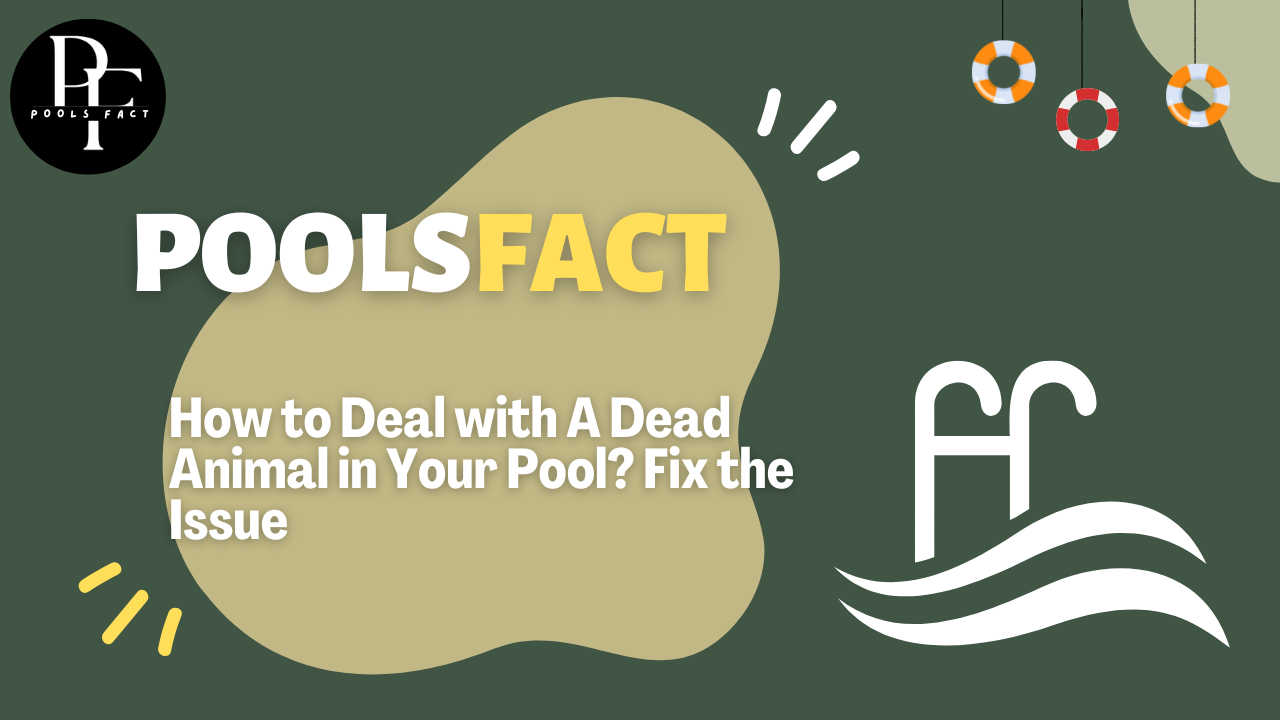If you are wondering what to do about a dead animal in a pool, you have come to the right spot. The majority of deceased animals in swimming pools don’t harm swimmers’ health. If you find a dead animal in the pool, you can make sure it’s safe to swim in by following the simple removal and cleaning instructions below.
Swimmers’ health could be put in danger by dead raccoons in pools. This is due to the possibility that raccoons carry the Baylisascaris worm, which can be transmitted from humans to animals.
Animals that Are Commonly Found in Swimming Pools
Small rodents are the most common kind of animal that people frequently discover in their swimming pools, while other species can also be present. Some of the species that may inhabit your pool include the following:

- Raccoons
- Squirrels and chipmunks
- Bats
- Mice
- Feral cats
- Skunks
- Birds
- Frogs
- Skunks
- Lizards
- Snakes
Do Dead Animals in Pools Pose a Health Risk to Swimmers?
The majority of deceased animals in swimming pools don’t harm swimmers’ health. Even if some of the germs they carry can infect humans, many of the diseases that animals carry only infect other animals.
In a well-kept pool, chlorine kills the majority of bacteria that animals carry within minutes. Before swimming in a pool where a dead animal has been found, it is important to act quickly on the steps below to get rid of the dead animal and clean the water.
Also, we’ve written a separate article specifically for you on “how to get rid of waterbugs in the pool,” which we trust you’ll find useful.
Also Read: How to Level an Above-Ground Pool with Water in It
Steps to Take if You Find a Dead Animal in Your Pool
If you find a dead animal in your pool or spa, the CDC says to follow these steps to clean it.
Shut Off the Pool to Swimmers
Again, a dead animal poses no significant health risk, but it is usually advisable to remove all swimmers from the water until any potential germs from the dead animal can be treated. Due to this, it is advisable to make sure that everyone who can swim leaves the water as you deal with the emergency.
We Wear Safety Gear
It is usually advisable to use gloves while interacting with a contamination site when dealing with a dead animal situation in order to prevent any disease spread, however unlikely it may be. Disposable gloves that are simple will work. After using the gloves, properly dispose of them.
Put the Dead Animal in A Bucket or A Net and Remove It
Because it could be disgusting to handle a potentially bloated dead animal in a pool, it is always preferable to remove the dead animal using some form of equipment rather than your own hands.
If the animal is in a skimmer, you might even consider using a small object, like a cup, to remove it because the space inside the skimmer might be too small for a net or bucket.
Bag the Animal Twice
When moving the deceased animal from the property, whether through the garbage or another method, double bagging it is helpful. Additionally, this will lessen any possible animal odor.
Get Clean Hands
Make sure to properly wash your hands with soap and warm water after removing the tiny critter and bagging it. Even though you removed the animal while wearing gloves and a tool, it is still a good idea to wash your hands out of caution.
Clean the Spa or Pool.
There’s no need to over-chlorinate the pool or do anything severe when disinfecting. The CDC really advises that you take the same precautions you would if someone unintentionally dumped solid-formed feces into your pool. The following are the steps:
- Your free chlorine concentration is 2 ppm
- Keep the pH of your pool or spa at or below 7.5.
- Keep the air at 77 degrees or higher.
- Make sure your filter is functioning properly.
- During this time, you should also immerse the removal instrument in the pool.
- Maintain these circumstances for 30 minutes.
Open the Pool Again
Once you have waited the required 30 minutes, you are allowed to reopen the pool or spa. This is a pretty simple process. If you’d like more information, you can read more about disinfection procedures and the reasons behind the numbers’ existence by clicking here.
- Preventing animals from drowning in your pool
- Preventing dead animals from entering your pool in the first place is the best way to handle them.
- Listed below are a few techniques for keeping animals away from your inground pool:
- Using a good safety cover and covering your pool when it’s not in use
- Install automatic sprinklers around your pool to keep wildlife away.
- Make a ramp or other tool to assist curious animals in exiting your pool.
- To stop animals from falling or jumping from overhanging trees, keep your trees trimmed.
Also Read: Best 13 Ways to Get Rid of Horseflies from Pool
Conclusion
These sanitizing and disinfecting procedures are for animals that are frequently discovered dead in swimming pools. Pre-weaned calves and lambs are frequently infected with the chlorine-tolerant germ Cryptosporidium, which could be dangerous to swimmers if discovered dead animal in a pool.
A professional must come to the pool to hyper-chlorinate the water after removing a dead calf or lamb. For guidance regarding hyperchlorination protocols, get in touch with your local health department.
Frequently Asked Questions (FAQs)
What Happens if You Drink Water with A Dead Animal in It?
Carcasses of birds or other animals can contaminate drinking water. The main danger is botulism. If botulism is not diagnosed quickly and treated promptly, it can be fatal.

Leave a Reply